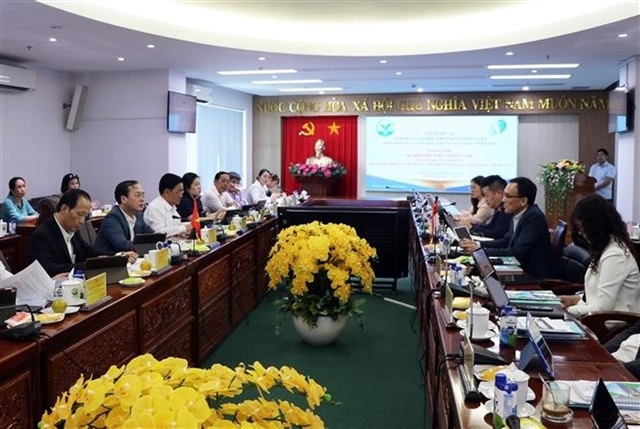Viet Nam anticipates record-high rice exports
Viet Nam anticipates record-high rice exports
Viet Nam hopes to export at least 550,000 tonnes of rice this month, which would bring full-year exports to a record-high of 7.65 million tonnes, according to the Viet Nam Food Association (VFA).

Speaking at a meeting in HCM City on Tuesday, Truong Thanh Phong, VFA chairman, said businesses had exported 7.1 million tonnes of rice for a free-on-board (FOB) value of US$3.16 billion in the first 11 months of the year.
This represented an increase of 5.57 per cent in volume but a fall of 3.73 per cent in value year-on-year because average export prices for the period were $43.03 per tonne lower than those in the same period last year.
"Exports of high-grade rice, including fragrant rice, sticky rice and broken rice, accounted for more than 59 per cent of the shipments made in the first 11 months, up 78 per cent against the same time last year."
"This was a big change in the country's rice-export sector," he said.
Countries in Asia and Africa were the main buyers of Vietnamese rice, accounting for 70 per cent and 23 per cent of total export volume, respectively.
Huynh Minh Hue, VFA's general secretary, said that, as of November 30, local enterprises had signed contracts to export 8.05 million tonnes of rice, up 10.62 per cent year-on-year. This meant that about 0.95 million tonnes would be delivered this month and early next year.
2013 forecast
Hue as well as other meeting participants said that world rice prices were not likely to increase in the coming months because supply was abundant.
Hue said the Food and Agriculture Organisation (FAO) forecasted that global rice production would once again outpace consumption for 2012-13 to reach 486 million tonnes, up about one per cent from the previous year. This means rice stocks would increase for eight consecutive years.
FAO also predicts that international rice trade would have a record-high 37.5 million tonnes in 2013, up around two per cent over 2012.
The increase in international rice trade reflects the expectation that rice-export countries would want to reduce their stocks to make room for storage of newly harvested rice.
Because of higher purchase prices, Thailand has accumulated a large inventory. If Thailand slashes prices to clear its stock, rice prices are expected to fall further.
Hue said that the asking prices of Vietnamese rice were equivalent to rice from India and Pakistan.
At such prices, and with better logistics conditions, Viet Nam could compete with Pakistan and India in exporting rice to China and Africa when their demand resumes.
In general, Viet Nam's rice trade is expected to face last year's situation, when the trade was stagnant in the first quarter due to low demand, according to delegates.
Despite anticipating many disadvantages in the rice export market, local exporters believe that flexible management of prices by the association and the Government's policy on rice stockpiles will help the local rice-export sector amid difficult times.
vietnamnews























